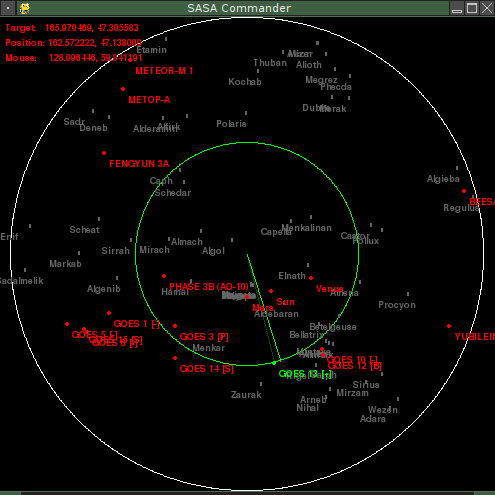Auto-tracking of low-orbit satellites or listening to the radio signal from the ISS

American engineer and radio amateur Travis Goodspeed (Travis Goodspeed) at the Summercon 2013 conference demonstrated a self-made system of automatic guidance of a satellite dish on moving targets. He published the design of the system in open access , programs for management were written on Python.
True, it will be quite difficult to repeat the Goodspeed design step by step, because for his project he used the very rare and expensive plate Felcom 82B from Furuno. It was created specifically for ships, so that they could point the transceiver precisely at an earth station or other object, while retaining the guidance as the ship moves. The plate is installed on a platform with motors and microcontrollers.

')
Travis slightly changed the control circuit of the plate, connecting its motors to the computer via the EiBotBoard board and the mini-computer BeagleBone . On the plate also put a webcam for automatic calibration in case of loss of azimuth.


To manage the dish, the programmer wrote several scripts that retrieve information from the PostgreSQL database from the server in the house. Thus, guidance, for example, on the ISS is carried out by a simple command.
UPDATE target SET name='ISS'; To predict the current coordinates of space objects, a small PyEphem script is used, which receives information from the CelesTrak catalog. The graphical user interface on Pygame shows all low-orbit satellites in sight, planets and stars from the CelesTrak base. Targeting an object is done by clicking the mouse. Python code can be run even on a smartphone.

In addition to low-orbit satellites, other moving targets can also be tracked. Naturally, stars are hardly interested in us, unless we want to listen to the radio signals from them, for example, rhythmic pulses from some powerful pulsars. But space satellites are another matter. You can go to Mars - and receive a signal from Curiosity and the Martian orbital station, through which it broadcasts the signal. You can try to listen to the International Space Station. The database even contains the coordinates of the most distant satellites, Voyager 1 and Voyager 2, which have almost flown out of the solar system, but are still regularly broadcasting a narrowly directed radio signal towards the Sun.
The signal from the plate goes to the PC, here you can filter and listen to it. However, this part of Travis has not yet completed.
Source: https://habr.com/ru/post/187696/
All Articles